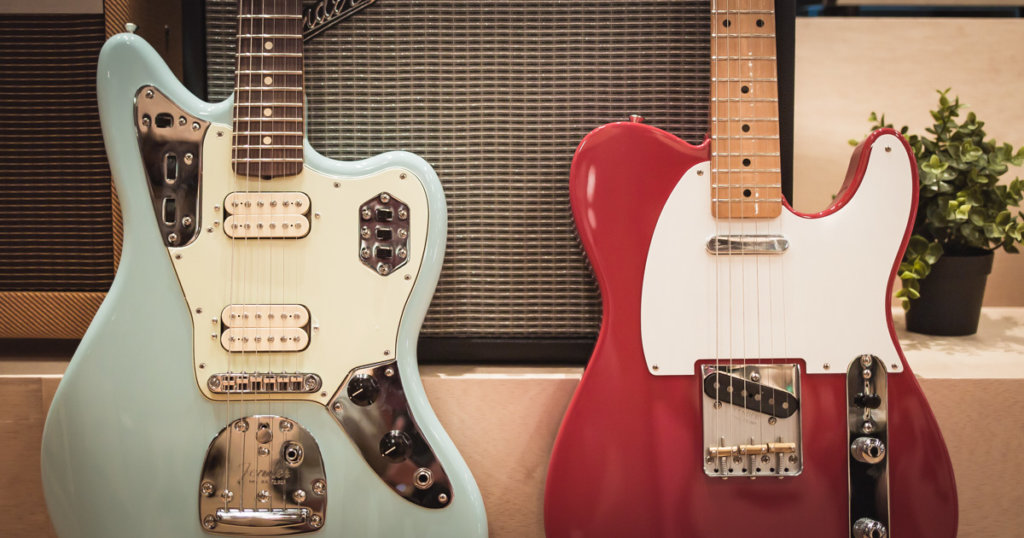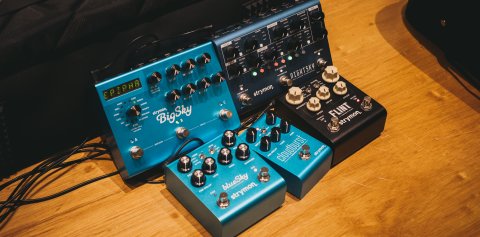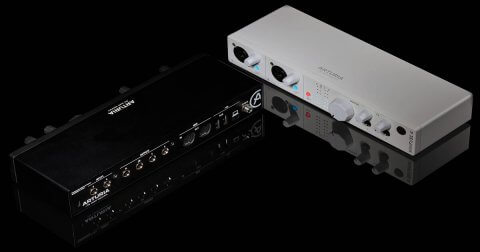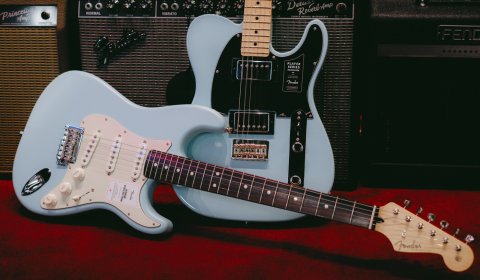If you’ve been on the hunt for an electric guitar, chances are you’ve heard many people talk about their pickups. Despite contributing greatly to the sound and tone of a guitar, pickups are also easily misunderstood.
To clear the air around these magnetic wonders, we’ll talk about what pickups really do and the differences between the two most common formats: the single coil and the humbucker.
What does a pickup do really?
Put simply, pickups are magnets wrapped with coils of wire that react to vibrations from the guitar’s (metal) strings. The pickup captures these vibrations and converts these kinetic movements to an amplified musical sound.
Single coil pickups
The first iteration of the pickup no doubt took the form of a single-coil pickup. The single coil pickup was a game changer in the 1930s. It allowed the guitar to finally be able to take centre stage and be heard over the large bands of the day. But amplification is only half the story – single coil pickups have helped shape the sounds of music history since the rise in popularity of the electric guitar.
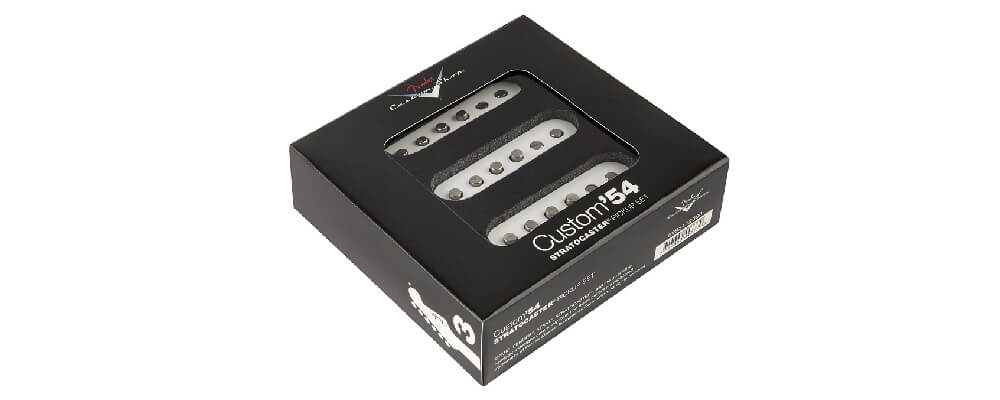
Single-coil pickups are best associated with iconic Fenders, and they’re popular choices for a myriad of genres. Single coils sound twangy, bell-like, glassy, with less emphasis on the midrange frequencies. And in out-of-phase positions (positions 2 and 4 on a Stratocaster) have a distinct “quack” that’s the stuff of legends. Sultans of Swing, anyone?
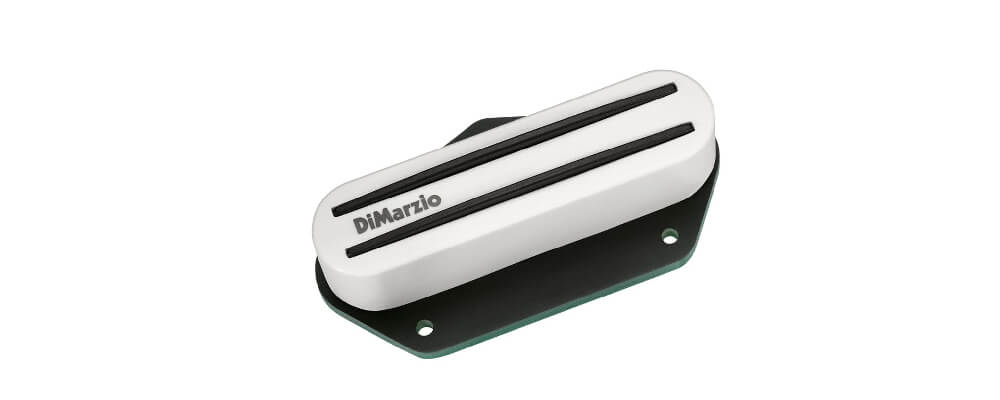
You’ll notice that single coils produce an audible hum. This is the notorious 60-cycle hum, which traditional single coils suffer from. It happens when the pickups literally “pick up” electromagnetic frequency interference and radio frequency interference in the air. It’s even “noisier” when the gain is turned up. In the 50s and 60s when most guitarists played with a clean tone, it was a problem players just accepted. But when music became louder and more aggressive, it still never stopped people like Jimi Hendrix, Pete Townshend and Richie Blackmore from turning it up to eleven!
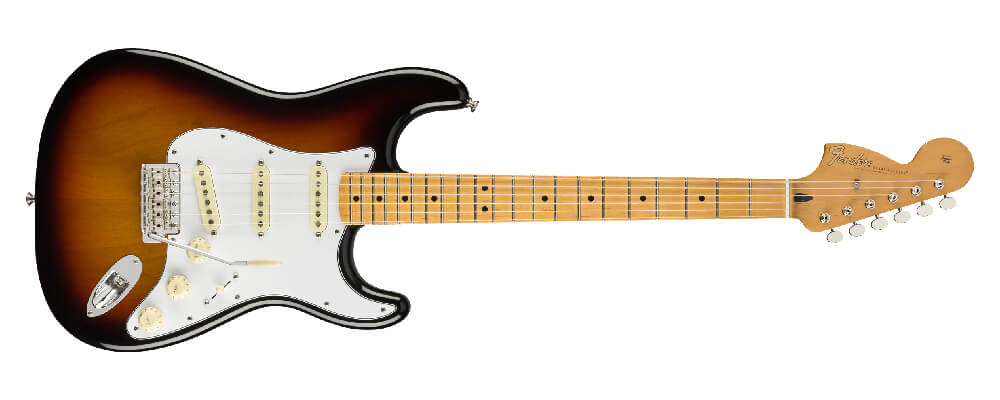
Thankfully, advancements in modern single coils have effectively removed most of these issues. There will always be players that accept no compromise – they want the classic single coil tone, and won’t put up with any hum.
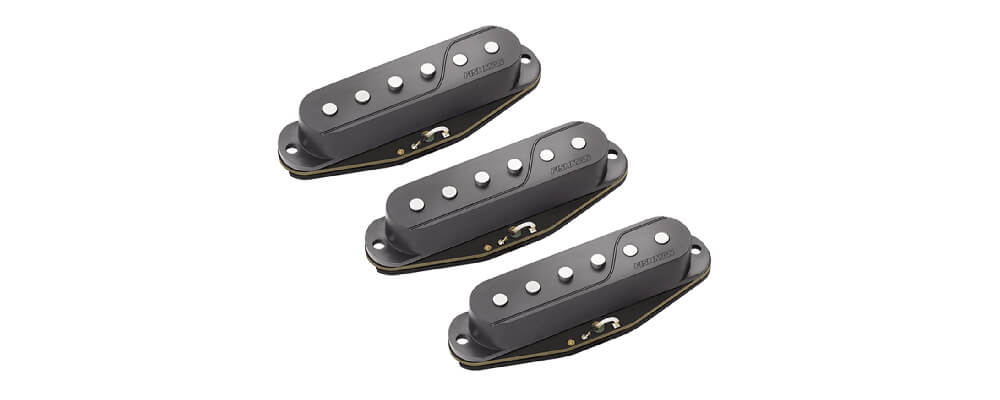
Today, noiseless single coils are readily available – you find them on guitars like Fender’s latest Ultra series.
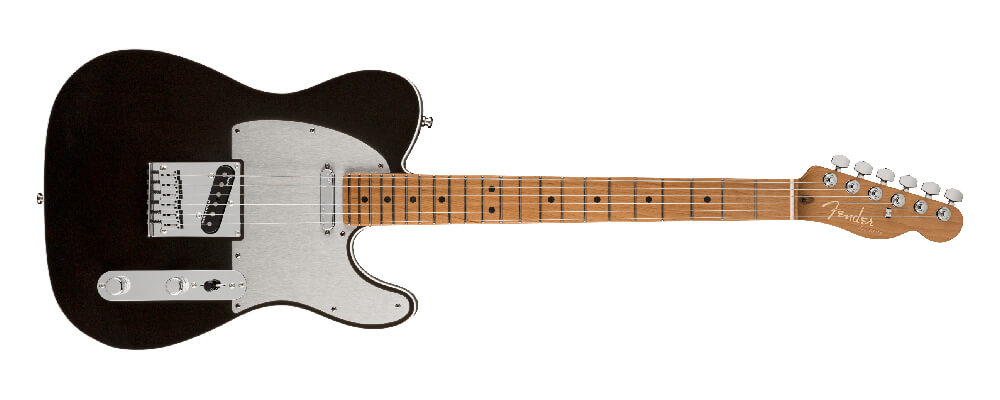
Humbucking pickups
Humbuckers serve to address the shortcomings of the single coil pickup. They’re built with two coils, instead of one, By connecting the coils together out of phase, they “buck” that annoying hum that you get with single coils. Compared to traditional vintage-style single coils, humbuckers also send a more powerful signal to the amp.
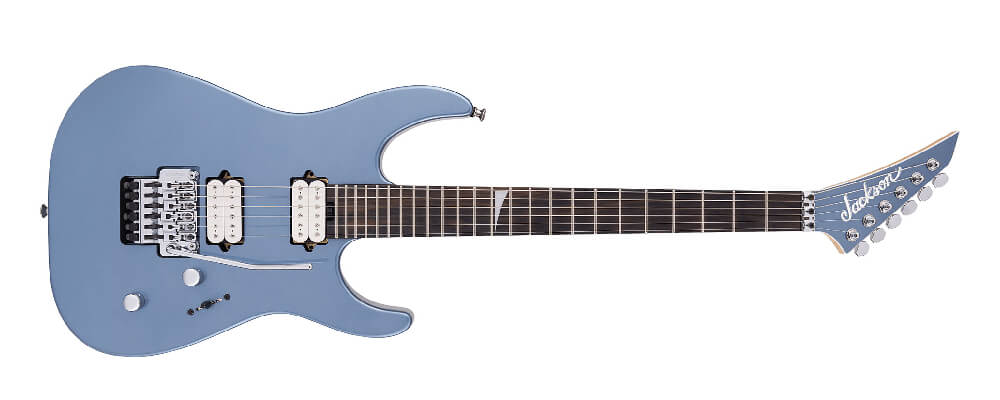
Want a great example of the classic humbucker tone? Take the famous PAF pickup designed by Seth Lover in the late 50s. It’s full of tight lows and mids, with a warm but clear tone favoured by jazz, rock and even metal players.
With a few wiring modifications, you can even modify the sound of the humbucker pickup. A split humbucker modification is a wiring job that gives it the ability to isolate or split one of its two coils, giving you a more single-coil-type sound. This just adds to its already impressive array of sounds.
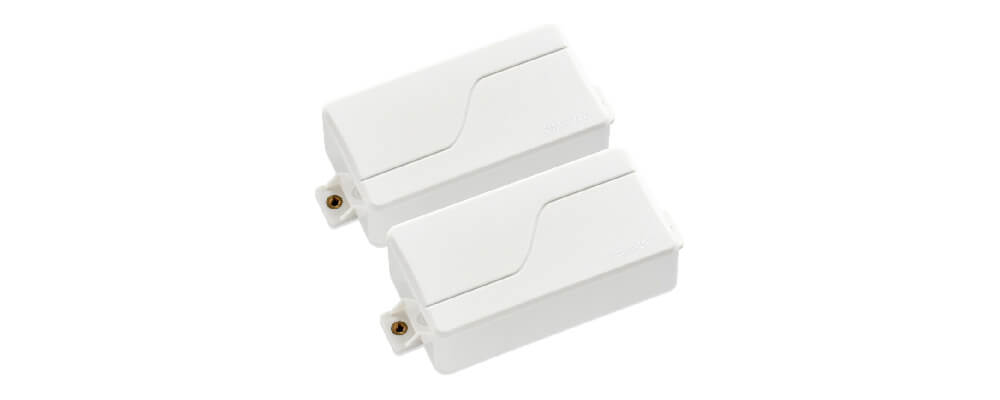
It’s no surprise they have a huge following, with legends like Slash, B.B. King and Marty Friedman championing humbuckers on their many guitars.
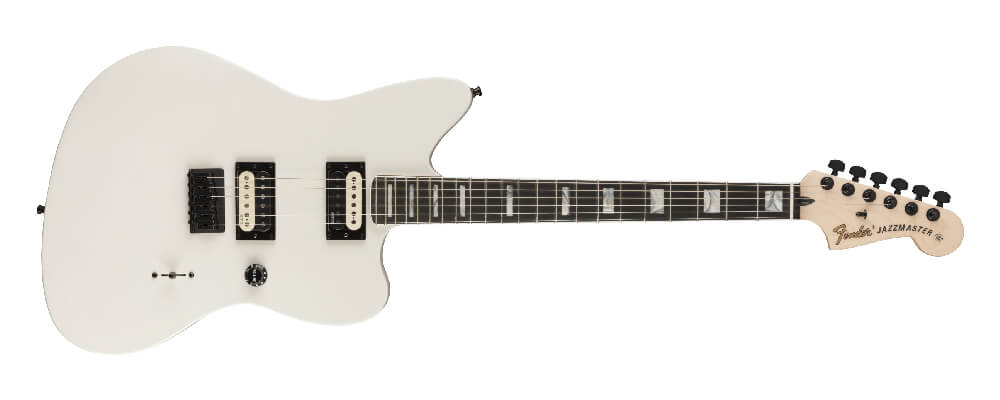
So what’s the best pickup?
We think you already know the answer – there is no one best pickup, but there’ll always be a favoured pickup for you. Everyone has their own personal musical preferences, their favourite tones and playing styles, and there will always be a specific pickup which best suits your needs.
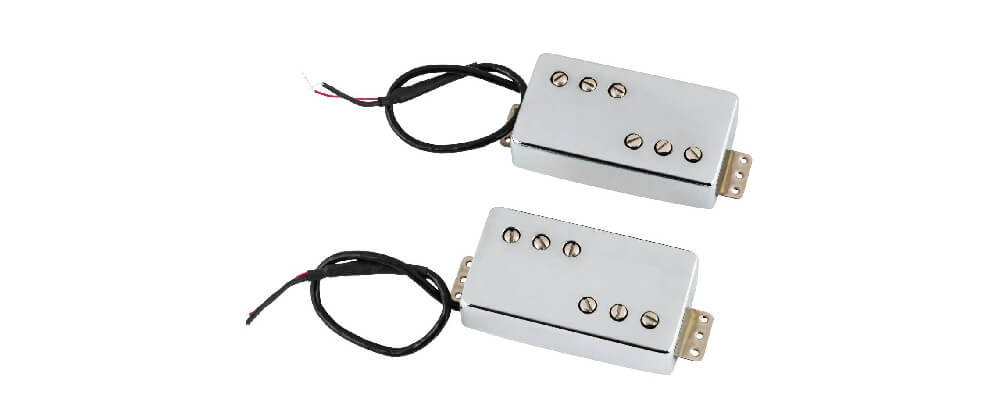
A good start to figuring out what pickups work best for you is to look at your guitar heroes. If you’re in love with that tone from John Mayer’s Gravity, chances are you’re going to enjoy chasing that tone with single coils best. If you crave the silky and fat singing lead tones of Slash, your best bet will definitely be a guitar with a humbucker pickup.
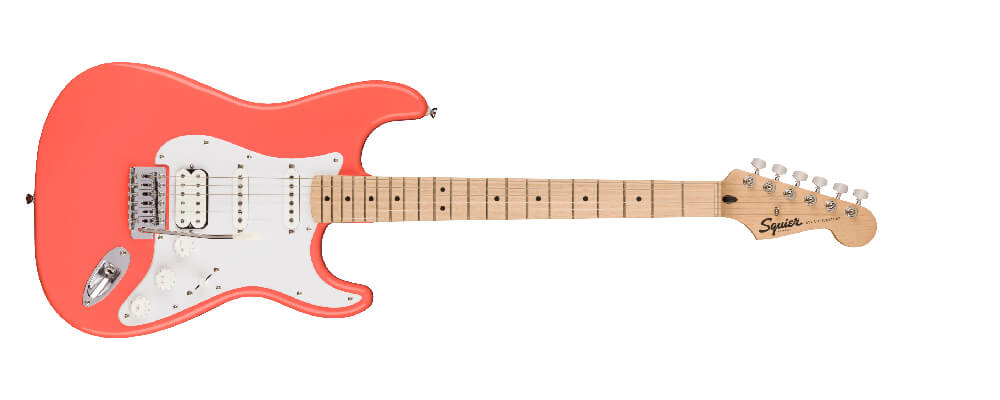
Of course, you’ll see guitars with a mixture of both single coils and humbucker pickups. These can give you the best of both worlds – bright and clear cleans on the neck single coil, to heavy, aggressive tones on the bridge humbucker.
To upgrade or stay stock?
Compared to buying a brand-new guitar, it’s easier and more inexpensive to swap out your pickups. It’s what makes upgrading stock pickups to another set such a common procedure for both seasoned and beginner players.
Maybe you’re in need of more output to get a more aggressive and compressed tone for lead playing. Or perhaps your stock pickups are producing sterile cleans. There are plenty of reasons you might want to swap your pickups. As a rule of thumb, you know your personal preferences best – so match your choices to your needs.
